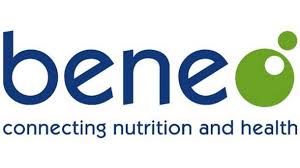News
Turning the spotlight on titanium dioxide
2 Sep 2019Titanium dioxide has been the main white pigment used in the food industry for years, but consumer groups and regulators have raised questions about its acceptability. What options are available for manufacturers?
Although it is a naturally occurring mineral, titanium dioxide (E171) is classified as an artificial colour, and it is widely considered the most effective white food colorant on the market. However, its reputation has taken some major hits over the past few years. French authorities are poised to implement a ban from January 2020, and several consumer organisations support even wider bans.

Their main concern is that nanoscale particles of titanium dioxide could cross biological barriers in the body and accumulate in various tissues in dangerous quantities. Most recently, Foodwatch has petitioned bakery ingredient manufacturer Dr. Oetker to remove the colouring from its products – although it does not use nanoscale titanium dioxide – while other consumer organisations, including the European consumer organisation BEUC and the Health and Environment Alliance (HEAL), have called for an EU-wide ban.
So, why the concern?
The International Agency of Research on Cancer (IARC) has listed titanium dioxide as a possible human carcinogen, but says there is “inadequate evidence in humans for the carcinogenicity of titanium dioxide”. Its listing as a possible carcinogen is based on one study that showed a potential risk for industrial workers inhaling titanium dioxide particles and lung cancer. However, it has not examined its safety in food.
Elsewhere, two recent studies in mice have suggested very high doses of nanoscale titanium dioxide – either injected or orally administered – could be toxic, but the European Food Safety Authority (EFSA) has found no evidence that the additive is carcinogenic in food, as has the US Food and Drug Administration. EFSA’s latest full safety assessment, released in 2016, concluded that it was not carcinogenic after oral administration. It then revised its opinion in 2018 following a request to take into account further research, and again reached the same conclusion.
French regulators say the upcoming ban is based on the precautionary principle rather than any particular danger linked to titanium dioxide in foods. Whatever the food industry may think of this approach, consumer concern about the additive seems to have gained momentum, and ingredient suppliers have started to come up with alternatives.
Calcium carbonate is another white colouring that has been around for years, although it does not provide the same opacity as titanium dioxide. Suppliers like IFC Solutions offer blends to make it more opaque for use in panned confectionery coatings, for example, while Sensient Food Colors has responded to manufacturer uncertainty about the additive with two titanium-free whitening and opacity ingredients. Beneo also provides a white colouring made from rice starch, which it says allows manufacturers to switch out E-numbers while providing a very white appearance. However, the ingredient needs to be used at a higher volume than titanium dioxide and is more expensive in formulations.
Meanwhile, data from market research organisation Mintel show that new product launches with titanium dioxide have started to decline, even in the sugar confectionery and gum markets, which historically have been the biggest users of the ingredient.


